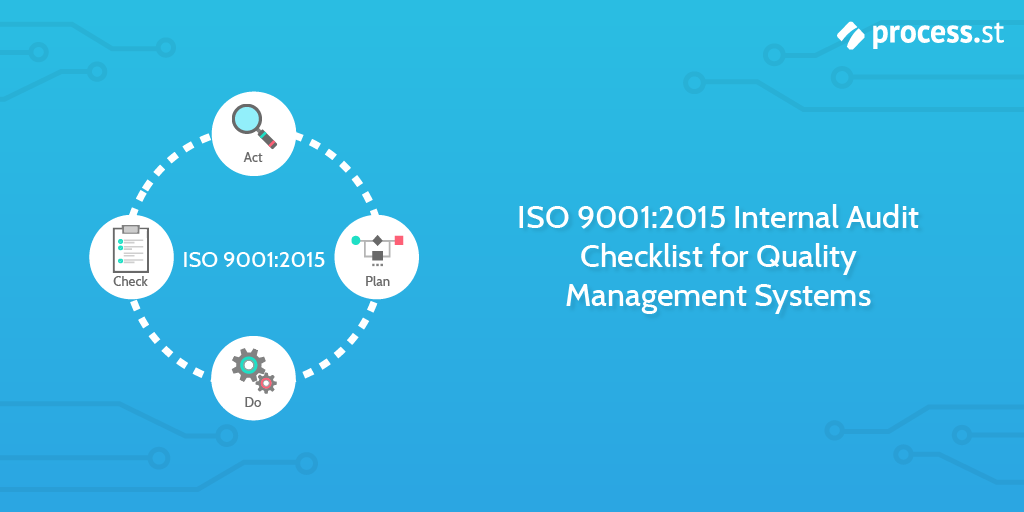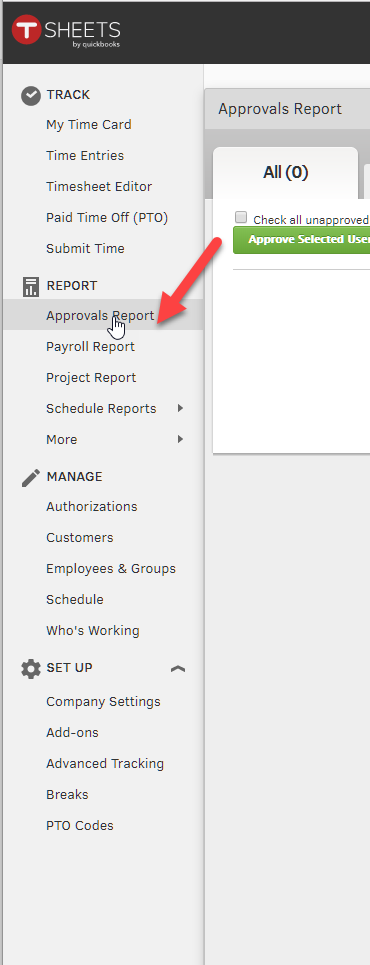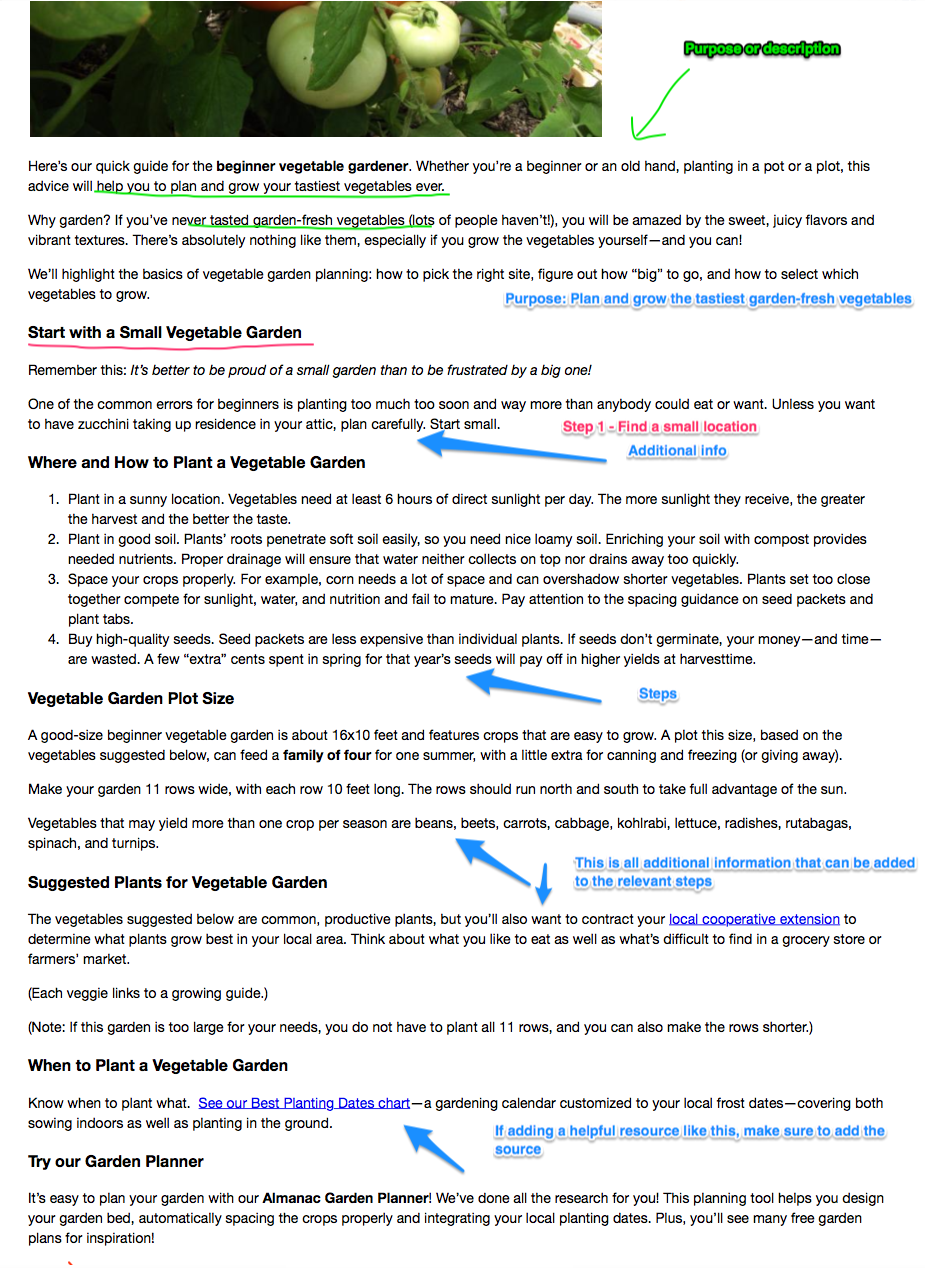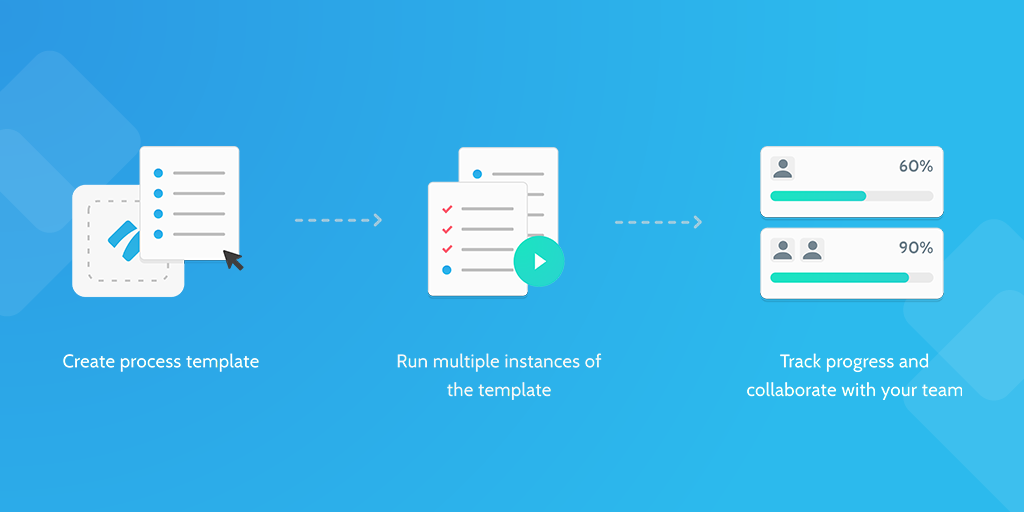So far, you'll have made records of the auditee's documentation and implementation of QMS policies and procedures using the form fields in the completed tasks so far (audit evidence).
You should also have made notes on both conformities and nonconformities alongside relevant suggestions for corrective action or opportunities for improvement (audit findings).
Below is an overview of the audit so far.
Context of the organization
Organization and its context
Internal issues: {{form.Internal_issues_information}}
External issues: {{form.External_issues_information}}
Relevant interested parties: {{form.Relevant_interested_parties_information}}
Any nonconformities?: {{form.Nonconformity_with_organization_and_its_context?}}
Recorded conformities: {{form.Record_conformities_for_organization_and_its_context}}
Recorded nonconformities: {{form.Record_nonconformities_for_organization_and_its_context_2}}
Suggestions: {{form.Suggestions_for_organization_and_its_context}}
Needs and expectations of interested parties
Information: {{form.Needs_and_expectations_of_interested_parties_information}}
Any nonconformities?: {{form.Nonconformity_with_needs_and_expectations_of_interested_parties?}}
Recorded conformities: {{form.Record_conformities_for_needs_and_expectations_of_interested_parties}}
Recorded nonconformities: {{form.Record_nonconformities_for_needs_and_expectations_of_interested_parties_2}}
Suggestions: {{form.Suggestions_for_needs_and_expectations_of_interested_parties}}
QMS scope
Information: {{form.QMS_scope_information}}
Any nonconformities?: {{form.Nonconformity_with_QMS_scope?}}
Recorded conformities: {{form.Record_conformities_for_QMS_scope}}
Recorded nonconformities: {{form.Record_nonconformities_for_QMS_scope_2}}
Suggestions: {{form.Suggestions_for_QMS_scope}}
Leadership
QMS leadership
Information: {{form.QMS_leadership_information}}
Any nonconformities?: {{form.Nonconformity_with_QMS_leadership?}}
Recorded conformities: {{form.Record_conformities_for_QMS_leadership}}
Recorded nonconformities: {{form.Record_nonconformities_for_QMS_leadership_2}}
Suggestions: {{form.Suggestions_for_QMS_leadership}}
Customer focus
Information: {{form.QMS_customer_focus_information}}
Any nonconformities?: {{form.Nonconformity_with_QMS_customer_focus?}}
Recorded conformities: {{form.Record_conformities_for_QMS_customer_focus}}
Recorded nonconformities: {{form.Record_nonconformities_for_QMS_customer_focus_2}}
Suggestions: {{form.Suggestions_for_QMS_customer_focus}}
Quality policy
Information: {{form.QMS_quality_policy_information}}
Any nonconformities?: {{form.Nonconformity_with_QMS_quality_policy?}}
Recorded conformities: {{form.Record_conformities_for_QMS_quality_policy}}
Recorded nonconformities: {{form.Record_nonconformities_for_QMS_quality_policy_2}}
Suggestions: {{form.Suggestions_for_QMS_quality_policy}}
Organizational roles and responsibilities
Information: {{form.QMS_roles_and_responsibilities_information}}
Any nonconformities?: {{form.Nonconformity_with_QMS_roles_and_responsibilities?}}
Recorded conformities: {{form.Record_conformities_for_QMS_roles_and_responsibilities}}
Recorded nonconformities: {{form.Record_nonconformities_for_QMS_roles_and_responsibilities_2}}
Suggestions: {{form.Suggestions_for_QMS_roles_and_responsibilities}}
QMS planning
Documentation of risks and opportunities
Risks information: {{form.QMS_risks_information}}
Procedures for risk mitigation information: {{form.Procedures_for_risk_mitigation_information}}
Opportunities information: {{form.QMS_opportunities_information}}
Procedures for engaging opportunities information: {{form.Procedures_for_engaging_opportunities_information}}
Any nonconformities?: {{form.Nonconformity_with_documentation_of_QMS_risks_and_opportunities?}}
Recorded conformities: {{form.Record_conformities_for_QMS_risks_and_opportunities}}
Recorded nonconformities: {{form.Record_nonconformities_for_QMS_risks_and_opportunities_2}}
Suggestions: {{form.Suggestions_for_QMS_risks_and_opportunities}}
Quality objectives
Information: {{form.QMS_quality_objectives_information}}
Any nonconformities?: {{form.Nonconformity_with_QMS_quality_objectives?}}
Recorded conformities: {{form.Record_conformities_for_QMS_quality_objectives}}
Recorded nonconformities: {{form.Record_nonconformities_for_QMS_quality_objectives}}
Suggestions: {{form.Suggestions_for_QMS_quality_objectives}}
Procedures for change to QMS
Information: {{form.Procedures_for_change_information}}
Any nonconformities?: {{form.Nonconformity_with_procedures_for_change?}}
Recorded conformities: {{form.Record_conformities_for_procedures_for_change}}
Recorded nonconformities: {{form.Record_nonconformities_for_procedures_for_change_2}}
Suggestions: {{form.Suggestions_for_procedures_for_change}}
Support
Organization and allocation of QMS resources
Information: {{form.Organization_and_allocation_of_resources_information}}
Any nonconformities?: {{form.Nonconformity_for_organization_and_allocation_of_resources?}}
Recorded conformities: {{form.Record_conformities_for_organization_and_allocation_of_resources}}
Recorded nonconformities: {{form.Record_nonconformities_for_organization_and_allocation_of_resources_2}}
Suggestions: {{form.Suggestions_for_organization_and_allocation_of_resources}}
HR integration
Information: {{form.HR_integration_information}}
Any nonconformities?: {{form.Nonconformity_with_HR_integration?}}
Recorded conformities: {{form.Record_conformities_for_HR_integration}}
Recorded nonconformities: {{form.Record_nonconformities_for_HR_integration_2}}
Suggestions: {{form.Suggestions_for_HR_integration}}
QMS infrastructure
Information: {{form.QMS_infrastructure_information}}
Any nonconformities?: {{form.Nonconformity_with_QMS_infrastructure?}}
Recorded conformities: {{form.Record_conformities_for_QMS_infrastructure}}
Recorded nonconformities: {{form.Record_nonconformities_for_QMS_infrastructure_2}}
Suggestions: {{form.Suggestions_for_QMS_infrastructure}}
QMS work environment
Information: {{form.QMS_work_environment_information}}
Any nonconformities?: {{form.Nonconformity_with_QMS_work_environment?}}
Recorded conformities: {{form.Record_conformities_for_QMS_work_environment}}
Recorded nonconformities: {{form.Record_nonconformities_for_QMS_work_environment_2}}
Suggestions: {{form.Suggestions_for_QMS_work_environment}}
Systems for monitoring and measurement of resources
Information: {{form.Systems_for_monitoring_and_measuring_resources_information}}
Any nonconformities?: {{form.Nonconformity_with_systems_for_monitoring_and_measuring_resources?}}
Recorded conformities: {{form.Record_conformities_for_systems_for_monitoring_and_measuring_resources}}
Recorded nonconformities: {{form.Record_nonconformities_for_systems_for_monitoring_and_measuring_resources_2}}
Suggestions: {{form.Suggestions_for_monitoring_and_measuring_resources}}
Organizational knowledge of the QMS
Information: {{form.Organizational_knowledge_of_QMS_information}}
Any nonconformities?: {{form.Nonconformity_with_organizational_knowledge_of_QMS_informaiton?}}
Recorded conformities: {{form.Record_conformities_for_organizational_knowledge_of_QMS_information}}
Recorded nonconformities: {{form.Record_nonconformities_for_organizational_knowledge_of_QMS_information_2}}
Suggestions: {{form.Suggestions_for_organizational_knowledge_of_QMS_information}}
QMS competence
Information: {{form.QMS_competence_information}}
Any nonconformities?: {{form.Nonconformity_with_QMS_competence?}}
Recorded conformities: {{form.Record_conformities_for_QMS_competence}}
Recorded nonconformities: {{form.Record_nonconformities_for_QMS_competence_2}}
Suggestions: {{form.Suggestions_for_QMS_competence}}
QMS awareness
Information: {{form.QMS_awareness_information}}
Any nonconformities?: {{form.Nonconformity_with_QMS_awareness?}}
Recorded conformities: {{form.Record_conformities_for_QMS_awareness}}
Recorded nonconformities: {{form.Record_nonconformities_for_QMS_awareness_2}}
Suggestions: {{form.Suggestions_for_QMS_awareness}}
Communication of QMS within the organization
Information: {{form.Communication_of_QMS_information}}
Any nonconformities?: {{form.Nonconformity_with_communication_of_QMS?}}
Recorded conformities: {{form.Record_conformities_for_communication_of_QMS}}
Recorded nonconformities: {{form.Record_nonconformities_for_communication_of_QMS_2}}
Suggestions: {{form.Suggestions_for_communication_of_QMS}}
Documented information
Information: {{form.Documented_information_notes}}
Any nonconformities?: {{form.Nonconformity_with_documented_information?}}
Recorded conformities: {{form.Record_conformities_for_documented_information}}
Recorded nonconformities: {{form.Record_nonconformities_for_documented_information_2}}
Suggestions: {{form.Suggestions_for_documented_information}}
Operation
Process control
Information: {{form.Process_control_information}}
Any nonconformities?: {{form.Nonconformity_with_process_control?}}
Recorded conformities: {{form.Record_conformities_for_process_control}}
Recorded nonconformities: {{form.Record_nonconformities_for_process_control_2}}
Suggestions: {{form.Suggestions_for_process_control}}
Determination of requirements for products and services
Information: {{form.Determination_of_requirements_for_products_and_services_information}}
Any nonconformities?: {{form.Nonconformity_with_determination_of_requirements_for_products_and_services?}}
Recorded conformities: {{form.Record_conformities_for_determination_of_requirements_for_product_and_services}}
Recorded nonconformities: {{form.Record_nonconformities_for_determination_of_requirements_for_product_and_services_2}}
Suggestions: {{form.Suggestions_for_determination_of_requirements_for_product_and_services}}
Design and development of products and services
Information: {{form.Design_and_development_of_products_and_services_information}}
Any nonconformities?: {{form.Nonconformity_with_design_and_development_of_products_and_services?}}
Recorded conformities: {{form.Record_conformities_for_design_and_development_of_products_and_services}}
Recorded nonconformities: {{form.Record_nonconformities_for_design_and_development_of_products_and_services_2}}
Suggestions: {{form.Suggestions_for_design_and_development_of_products_and_services}}
Design and development inputs
Information: {{form.Design_and_development_inputs_information}}
Any nonconformities?: {{form.Nonconformity_with_design_and_development_inputs?}}
Recorded conformities: {{form.Record_conformities_for_design_and_development_inputs}}
Recorded nonconformities: {{form.Record_nonconformities_for_design_and_development_inputs_2}}
Suggestions: {{form.Suggestions_for_design_and_development_inputs}}
Design and development controls
Information: {{form.Design_and_development_controls_information}}
Any nonconformities?: {{form.Nonconformity_with_design_and_development_controls?}}
Recorded conformities: {{form.Record_conformities_for_design_and_development_controls}}
Recorded nonconformities: {{form.Record_nonconformities_for_design_and_development_controls_2}}
Suggestions: {{form.Suggestions_for_design_and_development_controls}}
Design and development outputs
Information: {{form.Design_and_development_outputs_information}}
Any nonconformities?: {{form.Nonconformity_with_design_and_development_outputs?}}
Recorded conformities: {{form.Record_conformities_for_design_and_development_outputs}}
Recorded nonconformities: {{form.Record_nonconformities_for_design_and_development_outputs_2}}
Suggestions: {{form.Suggestions_for_design_and_development_outputs}}
Design and development changes
Information: {{form.Design_and_development_changes_information}}
Any nonconformities?: {{form.Nonconformity_with_design_and_development_changes?}}
Recorded conformities: {{form.Record_conformities_for_design_and_development_changes}}
Recorded nonconformities: {{form.Record_nonconformities_for_design_and_development_changes_2}}
Suggestions: {{form.Suggestions_for_design_and_development_changes}}
Control of externally provided products and services
Information: {{form.Control_of_externally_provided_products_and_services_information}}
Any nonconformities?: {{form.Nonconformity_with_control_of_externally_provided_products_and_services?}}
Recorded conformities: {{form.Record_conformities_for_control_of_externally_provided_products_and_services}}
Recorded nonconformities: {{form.Record_nonconformities_for_control_of_externally_provided_products_and_services_2}}
Suggestions: {{form.Suggestions_for_control_of_externally_provided_products_and_services}}
Type and extent of control
Information: {{form.Type_and_extent_of_control_information}}
Any nonconformities?: {{form.Nonconformity_with_type_and_extent_of_control?}}
Recorded conformities: {{form.Record_conformities_for_type_and_extent_of_control}}
Recorded nonconformities: {{form.Record_nonconformities_for_type_and_extent_of_control_2}}
Suggestions: {{form.Suggestions_for_type_and_extent_of_control}}
Information for external providers
Information: {{form.Information_for_external_providers_information}}
Any nonconformities?: {{form.Nonconformity_with_information_for_external_providers?}}
Recorded conformities: {{form.Record_conformities_for_information_for_external_providers}}
Recorded nonconformities: {{form.Record_nonconformities_for_information_for_external_providers_2}}
Suggestions: {{form.Suggestions_for_information_for_external_providers}}
Control of production and service provision
Information: {{form.Control_of_production_and_service_provision_information}}
Any nonconformities?: {{form.Nonconformity_with_control_of_production_and_service_provision?}}
Recorded conformities: {{form.Record_conformities_for_control_of_production_and_service_provision}}
Recorded nonconformities: {{form.Record_nonconformities_for_control_of_production_and_service_provision_2}}
Suggestions: {{form.Suggestions_for_control_of_production_and_service_provision}}
Type and extent of control
Information: {{form.Type_and_extent_of_control_information}}
Any nonconformities?: {{form.Nonconformity_with_type_and_extent_of_control?}}
Recorded conformities: {{form.Record_conformities_for_type_and_extent_of_control}}
Recorded nonconformities: {{form.Record_nonconformities_for_type_and_extent_of_control_2}}
Suggestions: {{form.Suggestions_for_type_and_extent_of_control}}
Information for external providers
Information: {{form.Information_for_external_providers_information}}
Any nonconformities?: {{form.Nonconformity_with_information_for_external_providers?}}
Recorded conformities: {{form.Record_conformities_for_information_for_external_providers}}
Recorded nonconformities: {{form.Record_nonconformities_for_information_for_external_providers_2}}
Suggestions: {{form.Suggestions_for_information_for_external_providers}}
Control of production and service provision
Information: {{form.Control_of_production_and_service_provision_information}}
Any nonconformities?: {{form.Nonconformity_with_control_of_production_and_service_provision?}}
Recorded conformities: {{form.Record_conformities_for_control_of_production_and_service_provision}}
Recorded nonconformities: {{form.Record_nonconformities_for_control_of_production_and_service_provision_2}}
Suggestions: {{form.Suggestions_for_control_of_production_and_service_provision}}
Identification and traceability of production control
Information: {{form.Identification_and_traceability_of_production_control_information}}
Any nonconformities?: {{form.Nonconformity_with_identification_and_traceability_of_production_control?}}
Recorded conformities: {{form.Record_conformities_for_identification_and_traceability_of_production_control}}
Recorded nonconformities: {{form.Record_nonconformities_for_identification_and_traceability_of_production_control_2}}
Suggestions: {{form.Suggestions_for_identification_and_traceability_of_production_control}}
Control of external provider/customer property
Information: {{form.Control_of_external_provider/customer_property_information}}
Any nonconformities?: {{form.Nonconformity_with_control_of_external_provider/customer_property?}}
Recorded conformities: {{form.Record_conformities_for_control_of_external_provider/customer_property}}
Recorded nonconformities: {{form.Record_nonconformities_for_control_of_external_provider/customer_property_2}}
Suggestions: {{form.Suggestions_for_control_of_external_provider/customer_property}}
Preservation procedures
Information: {{form.Preservation_procedures_information}}
Any nonconformities?: {{form.Nonconformity_with_preservation_procedures?}}
Recorded conformities: {{form.Record_conformities_for_preservation_procedures}}
Recorded nonconformities: {{form.Record_nonconformities_for_preservation_procedures_2}}
Suggestions: {{form.Suggestions_for_preservation_procedures}}
Post-delivery activities
Information: {{form.Post-delivery_activities_information}}
Any nonconformities?: {{form.Nonconformity_with_post-delivery_activities?}}
Recorded conformities: {{form.Record_conformities_for_post-delivery_activities}}
Recorded nonconformities: {{form.Record_nonconformities_for_post-delivery_activities_2}}
Suggestions: {{form.Suggestions_for_post-delivery_activities}}
Control of changes
Information: {{form.Control_of_changes_information}}
Any nonconformities?: {{form.Nonconformity_with_control_of_changes?}}
Recorded conformities: {{form.Record_conformities_for_control_of_changes}}
Recorded nonconformities: {{form.Record_nonconformities_for_control_of_changes_2}}
Suggestions: {{form.Suggestions_for_control_of_changes}}
Release of products and services
Information: {{form.Release_of_products_and_services_information}}
Any nonconformities?: {{form.Nonconformity_with_release_of_products_and_services?}}
Recorded conformities: {{form.Record_conformities_for_release_of_products_and_services}}
Recorded nonconformities: {{form.Record_nonconformities_for_release_of_products_and_services_2}}
Suggestions: {{form.Suggestions_for_release_of_products_and_services}}
Control of nonconforming outputs
Information: {{form.Control_of_nonconforming_outputs_information}}
Any nonconformities?: {{form.Nonconformity_with_control_of_nonconforming_outputs?}}
Recorded conformities: {{form.Record_conformities_for_control_of_nonconforming_outputs}}
Recorded nonconformities: {{form.Record_nonconformities_for_control_of_nonconforming_outputs_2}}
Suggestions: {{form.Suggestions_for_control_of_nonconforming_outputs}}
Performance evaluation
QMS performance evaluation
Information: {{form.QMS_performance_evaluation_information}}
Any nonconformities?: {{form.Nonconformity_with_QMS_performance_evaluation?}}
Recorded conformities: {{form.Record_conformities_for_QMS_performance_evaluation}}
Recorded nonconformities: {{form.Record_nonconformities_for_QMS_performance_evaluation_2}}
Suggestions: {{form.Suggestions_for_QMS_performance_evaluation}}
Customer satisfaction
Information: {{form.Customer_satisfaction_information}}
Any nonconformities?: {{form.Nonconformity_with_customer_satisfaction?}}
Recorded conformities: {{form.Record_conformities_for_customer_satisfaction}}
Recorded nonconformities: {{form.Record_nonconformities_for_customer_satisfaction_2}}
Suggestions: {{form.Suggestions_for_customer_satisfaction}}
Performance analysis and evaluation procedures
Information: {{form.Performance_analysis_and_evaluation_procedures_information}}
Any nonconformities?: {{form.Nonconformity_with_performance_analysis_and_evaluation_of_procedures?}}
Recorded conformities: {{form.Record_conformities_for_performance_analysis_and_evaluation_of_procedures}}
Recorded nonconformities: {{form.Record_nonconformities_for_performance_analysis_and_evaluation_of_procedures_2}}
Suggestions: {{form.Suggestions_for_performance_analysis_and_evaluation_of_procedures}}
Internal audit procedures
Information: {{form.Internal_audit_procedures_information}}
Any nonconformities?: {{form.Nonconformity_with_internal_audit_procedures?}}
Recorded conformities: {{form.Record_conformities_for_internal_audit_procedures}}
Recorded nonconformities: {{form.Record_nonconformities_for_internal_audit_procedures_2}}
Suggestions: {{form.Suggestions_for_internal_audit_procedures}}
Management review procedures
Information: {{form.Management_review_procedures_information}}
Any nonconformities?: {{form.Nonconformity_with_management_review_procedures?}}
Recorded conformities: {{form.Record_conformities_for_management_review_procedures}}
Recorded nonconformities: {{form.Record_nonconformities_for_management_review_procedures_2}}
Suggestions: {{form.Suggestions_for_management_review_procedures}}
Improvement
Procedures for nonconformity and corrective action
Information: {{form.Procedures_for_nonconformity_and_corrective_action_information}}
Any nonconformities?: {{form.Nonconformity_with_procedures_for_nonconformity_and_corrective_action?}}
Recorded conformities: {{form.Record_conformities_for_procedures_for_nonconformity_and_corrective_action}}
Recorded nonconformities: {{form.Record_nonconformities_for_procedures_for_nonconformity_and_corrective_action_2}}
Suggestions: {{form.Suggestions_for_procedures_for_nonconformity_and_corrective_action}}
Procedures for continuous improvement
Information: {{form.Procedures_for_continuous_improvement_information}}
Any nonconformities?: {{form.Nonconformity_with_procedures_for_continuous_improvement?}}
Recorded conformities: {{form.Record_conformities_for_continuous_improvement_procedures}}
Recorded nonconformities: {{form.Record_nonconformities_for_continuous_improvement_procedures_2}}
Suggestions: {{form.Suggestions_for_continuous_improvement_procedures}}






